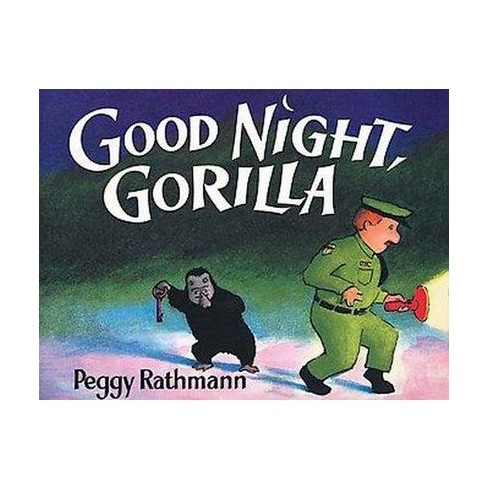

Possibly this is the first time I've ever read the hardcover, because we owned the board book. I seem to be unable to write a different review on a different edition, which is annoying.

On the basis of this book alone Rathmann should have received a MacArthur grant. If you know someone who is going to have a baby, please be sure they have a copy of this one. For an older child, you can ask more complex questions such as "What is missing from the Lion's cage that all the other animals have in their cages?" or "Why do you think the zoo keeper picked those pictures to hang on his wall?" You can ask any child to deduce certain aspects of the story, such as what color key do you think will open the lion's cage (key color matches cage color)? After several readings, you can test a child's memory with "There's only one key left on the key ring - who's cage is it for?" Other questions about how a character feels based on their facial expression and/or actions are great, too. You can ask a younger child to tell you where the moon is on the page (it, or at least a piece of it, is visible somewhere on almost every page). You can start asking a two or three year old to tell you what the story is on each page. Where the book really shines however, is in all that you can do with it. It has very few words (only "good," "night," "gorilla," "dear," "zoo" and the names of the five other animals in the book)and is brief.Įven read as merely a story, the book is engaging for a very young child, thanks to the bright colors, silly story line and playful illustrations. Good Night, Gorilla is the quintessential "first book" for very young children (6 months through to approximately 3 years). And just because she's a woman zookeeper, it doesn't mean she's not a neoliberal, upholding the authority of the institution even in the face of a more obvious possibility for solidarity. Pro-tip: Just because the day-shift zookeeper is already in bed when the night-shift zookeeper comes home doesn't mean she's not a zookeeper.

I find the moment where all the animals, during their occupation of the zookeepers' residence, kindly bid goodnight to their oppressors, to be a deeply moving representation of the possibilities of a different world akin to the end of Starhawk's THE FIFTH SACRED THING, when the occupied tell the soldiers "there is room at the table for you." The animals are crying out for us to take our place in the ecosystem. The message of solidarity and collective action in the service of dismantling the zoo-industrial complex is a timeless one (or, rather, a deeply timely one). every single night) for a year, I will say that GOOD NIGHT, GORILLA holds up. Well, after reading this book literally every night (and by literally here I mean literally in the old true sense, i.e.


 0 kommentar(er)
0 kommentar(er)
